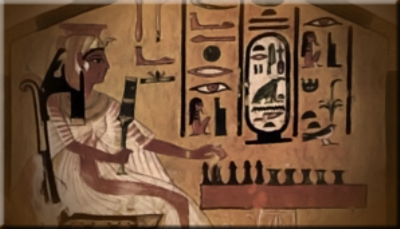|

“Board games exercise the human mind”
Human beings have played board games from antiquity, many of which have come and gone during our convoluted history. Board games have been played in the East for over five millenniums and games using counters or draughts were played in Mesopotamia two millenniums before the birth of the Messiah. Most of their rules have been mislayed or entirely lost during the intervening centuries. In ancient Egypt, during the Pharaonic period, board games were an integral part of social life, evidenced by Senet, which was played on a board of 30 cells.

In the Egyptian temple of Kurna, built around 1400 BC, a board of Nine Mens Morris with nine counters for each player has been found carved into the slab of a roof. QU Nefertaris tomb is located near Luxor, in the valley of the Queens (Egypt). The tomb was discovered in 1904 and was intended as the last resting place of Rameses IIs favourite wife. It is 3,200+ years old. The colours of the murals are as bright and rich as if they had just been painted. It is overwhelmingly beautiful and gorgeously decorated.
This tomb is one of 80 found in the valley of the Queens. Through the corridors and pillared halls, a life-size Nefertari is shown in numerous scenes, before different gods of the underworld beneath a ceiling of deep-blue sky scattered with gold stars. Rameses II paid her the honour of building a temple beside his own at Abu Simbel. Nefertari means beautiful lady. She was reputed to be a great beauty and is shown on her tomb walls to be tall and slim, elegant in a long white dress with a simple sash, as with perfect posture she makes her offerings to the gods or plays a game of draughts.
Shading was used to give her face form. The finest original copy of The Book of the Dead is the Papyrus of Ani, now one of the treasures of the British Museum in London. Written by a royal scribe, this scroll is 78 feet long and 15 feet inches wide, wonderfully illustrated in colour. It also contains an illustration of the resurrection of the scribe Ani himself and his wife Tutu, who are depicted playing Senet - which may give lovers of Senet some idea of its age. A game similar to Backgammon was played in Roman times.
Games are a direct expression of the patterns and conflicts of the psyche and in general are symbolic of the patterns of life - with chequered patterns referring to chequered careers, of dark episodes alternating with light, ups and downs etc. The different conflicting forces move, interrelate, lock and fly apart - usually red versus black, in the basic conflict. The symbolic significance of a game sometimes gives it an irrational appeal, an obsessional quality, as with childrens crazes.
Games are related to the playful inventive and positive side of the child archetype. If you draw a square, a circle and a triangle and then turn them into pictures, they can be interpreted symbolically.
Games are quite useful in that they demonstrate how near the symbolic realm really is, and how it can be fairly consistent between a variety of people. The square refers to the earth symbolically i.e., material outward existence.
The circle, the inner life. If a circle is turned into a sun for example, all is fairly sunny within, even heroic. The triangle refers to fire, the passions and sexuality. If the triangle is drawn pointing upwards (as in the Chesmayne piece set), then the emotional life is usually conscious and rational, better differentiated.
The landscape includes all kinds of fascinating symbolic features, which can be deciphered with intuition, combined through a familiarity with symbolism.
There are many word, card and other board games which exercise the human mind and give many hours of pleasurable enjoyment - bridge, scrabble, poker games, backgammon, cribbage and Shogi allow you to have fun competing in the game best suited to your mental ability. A game that Albert Einstein played as a child sold for $20,000 in Portsmouth, New Hampshire, USA, in 1995.
|